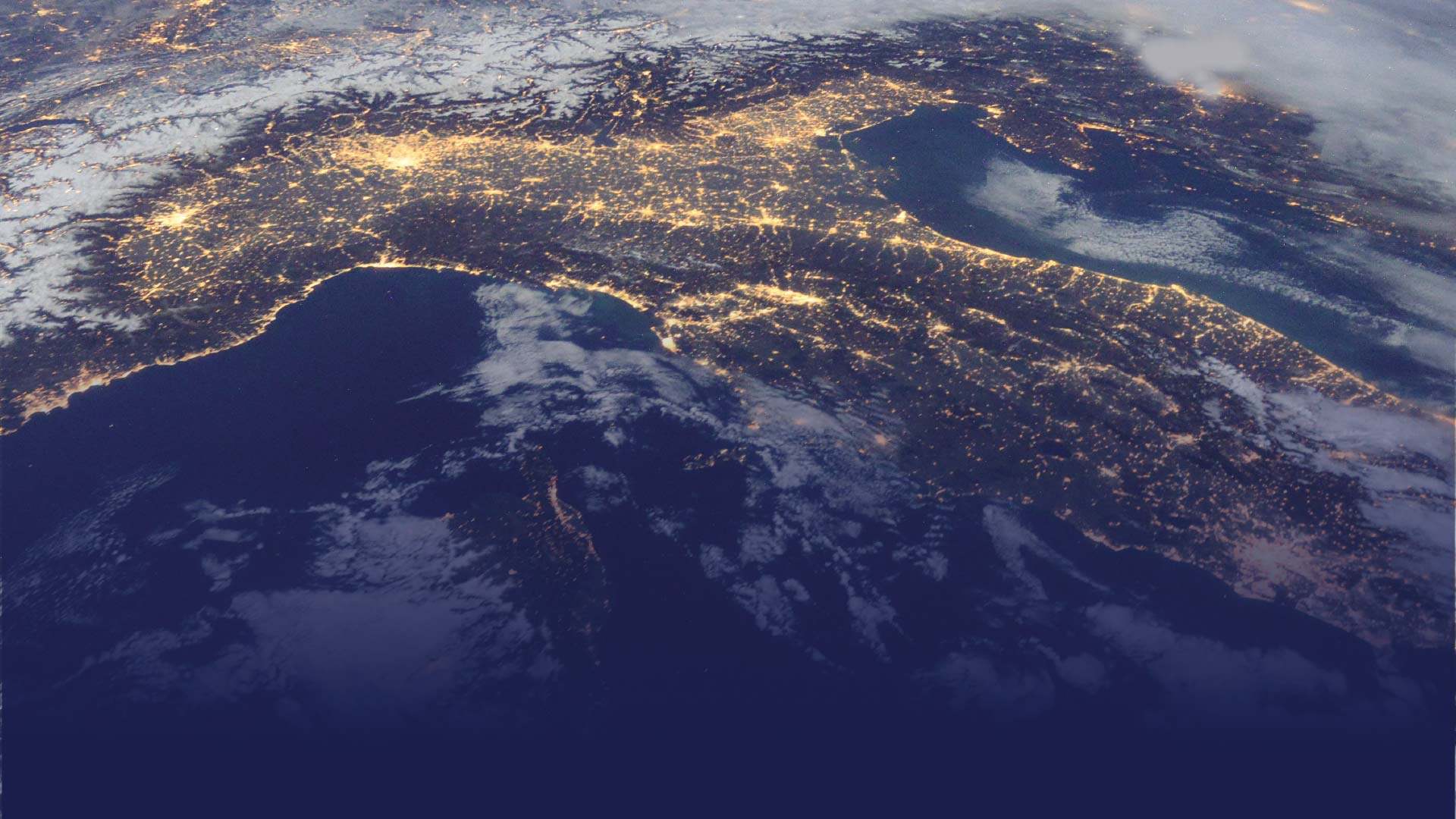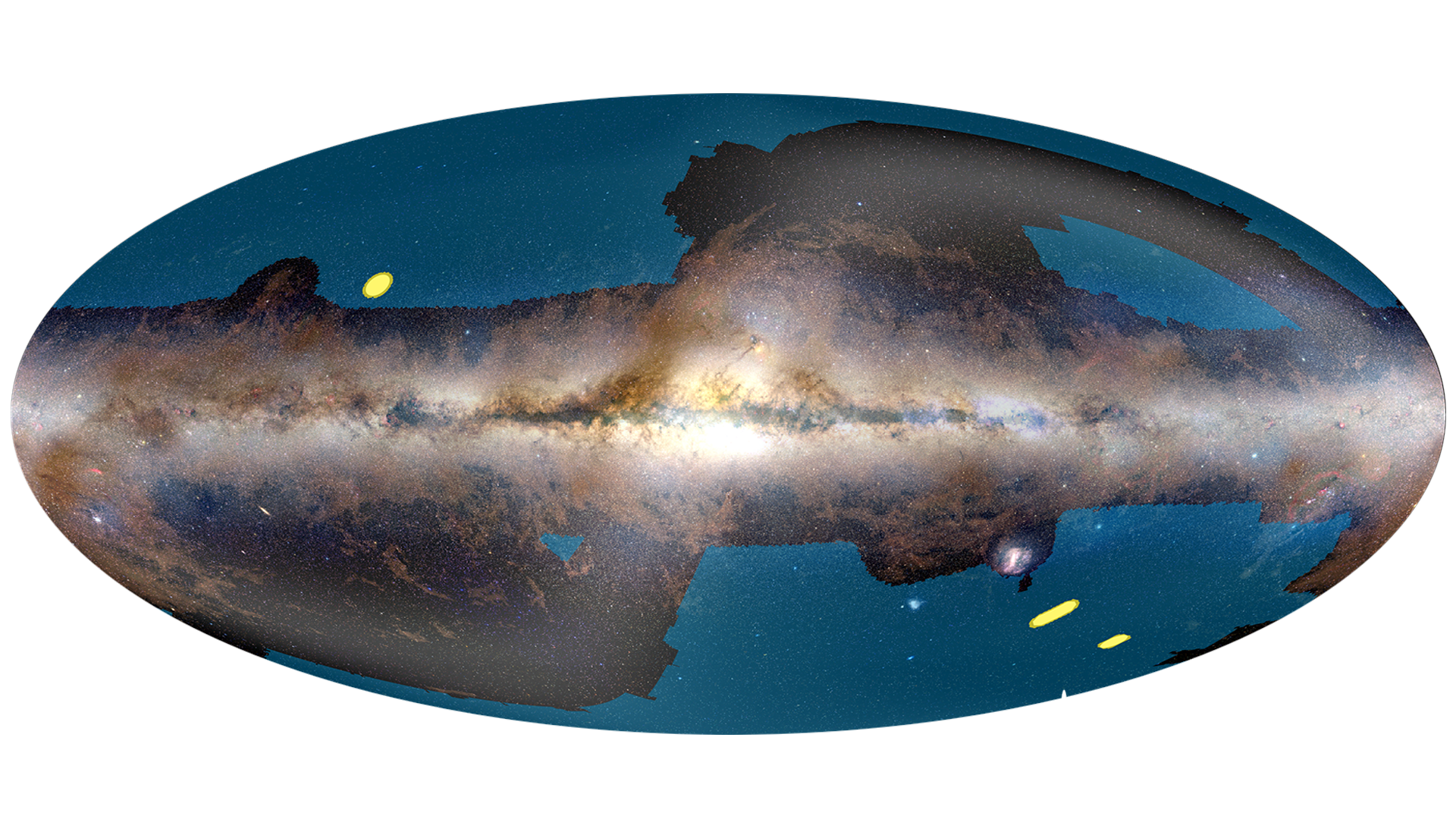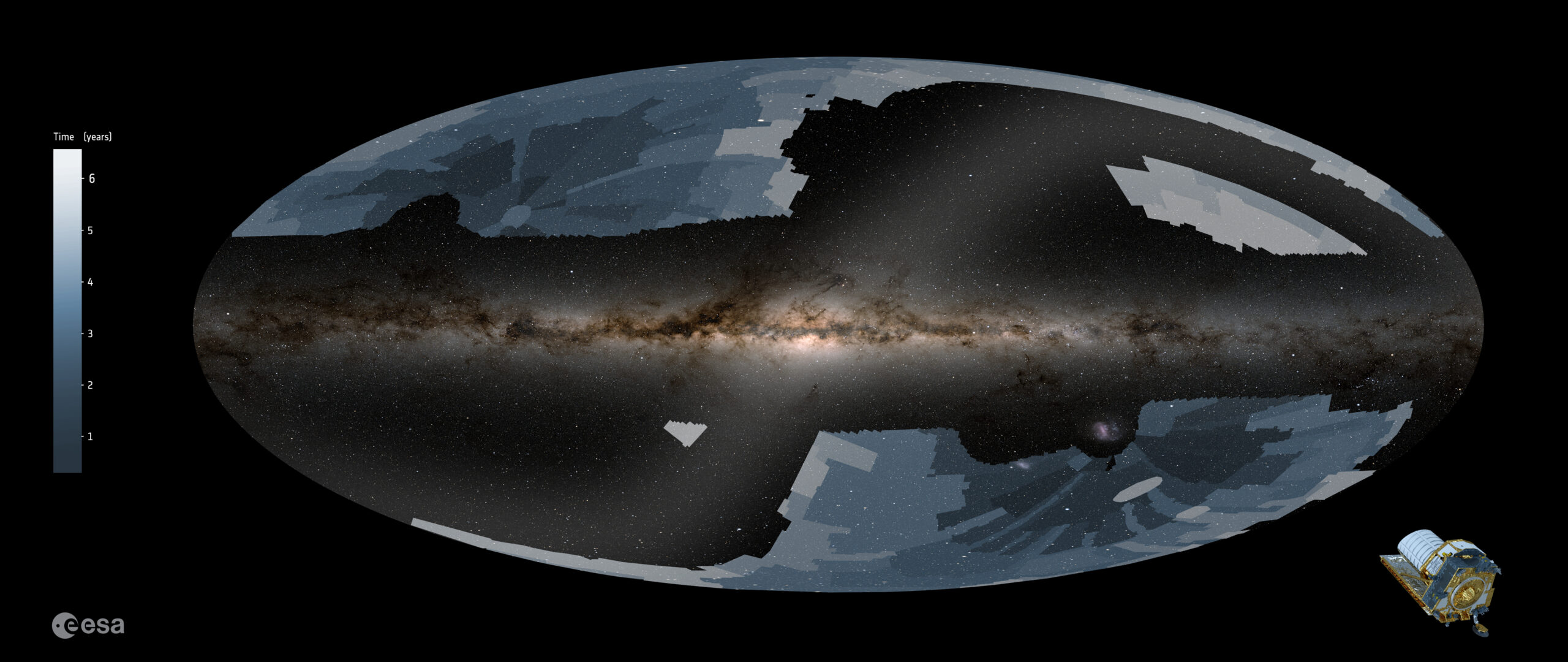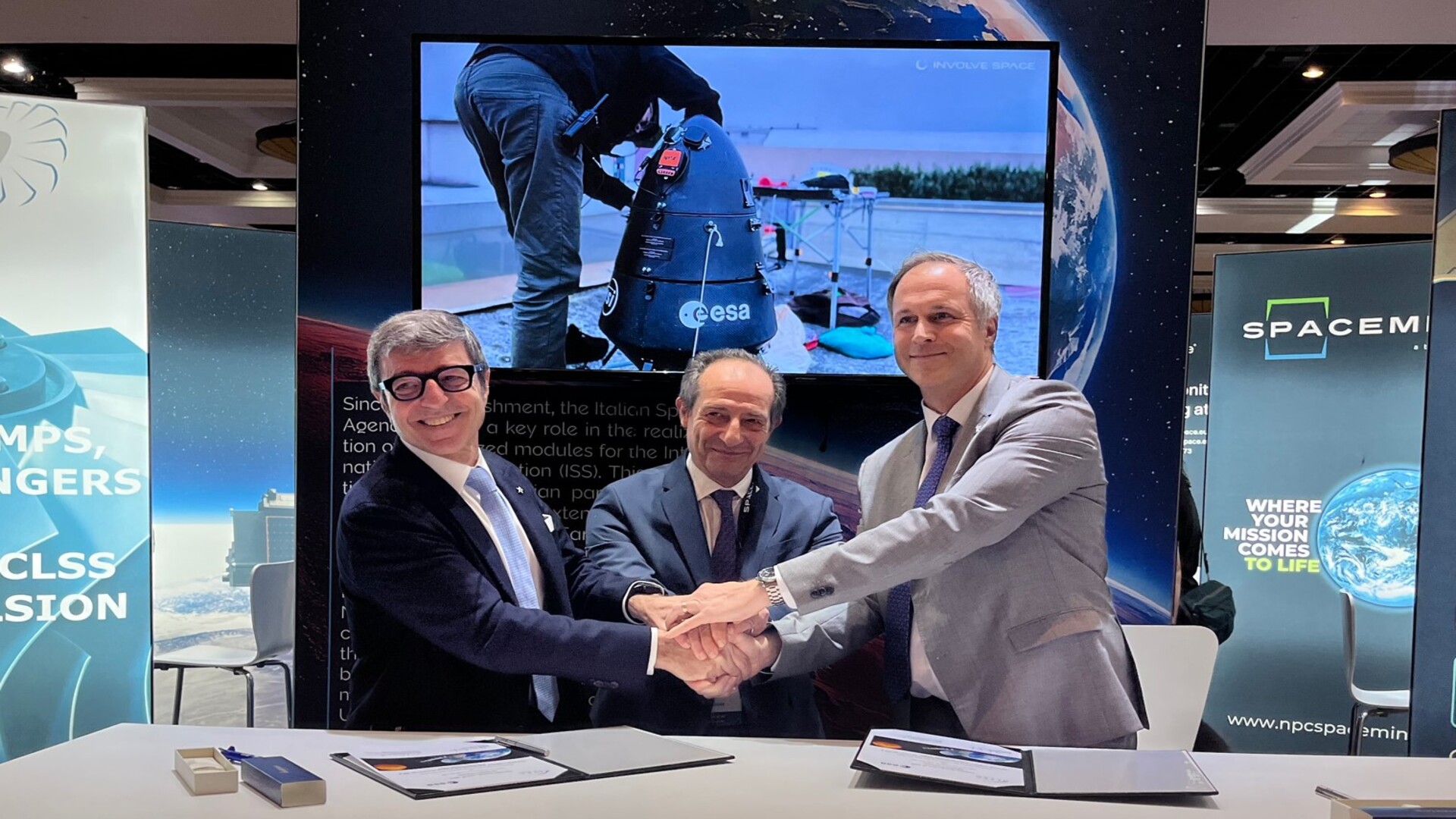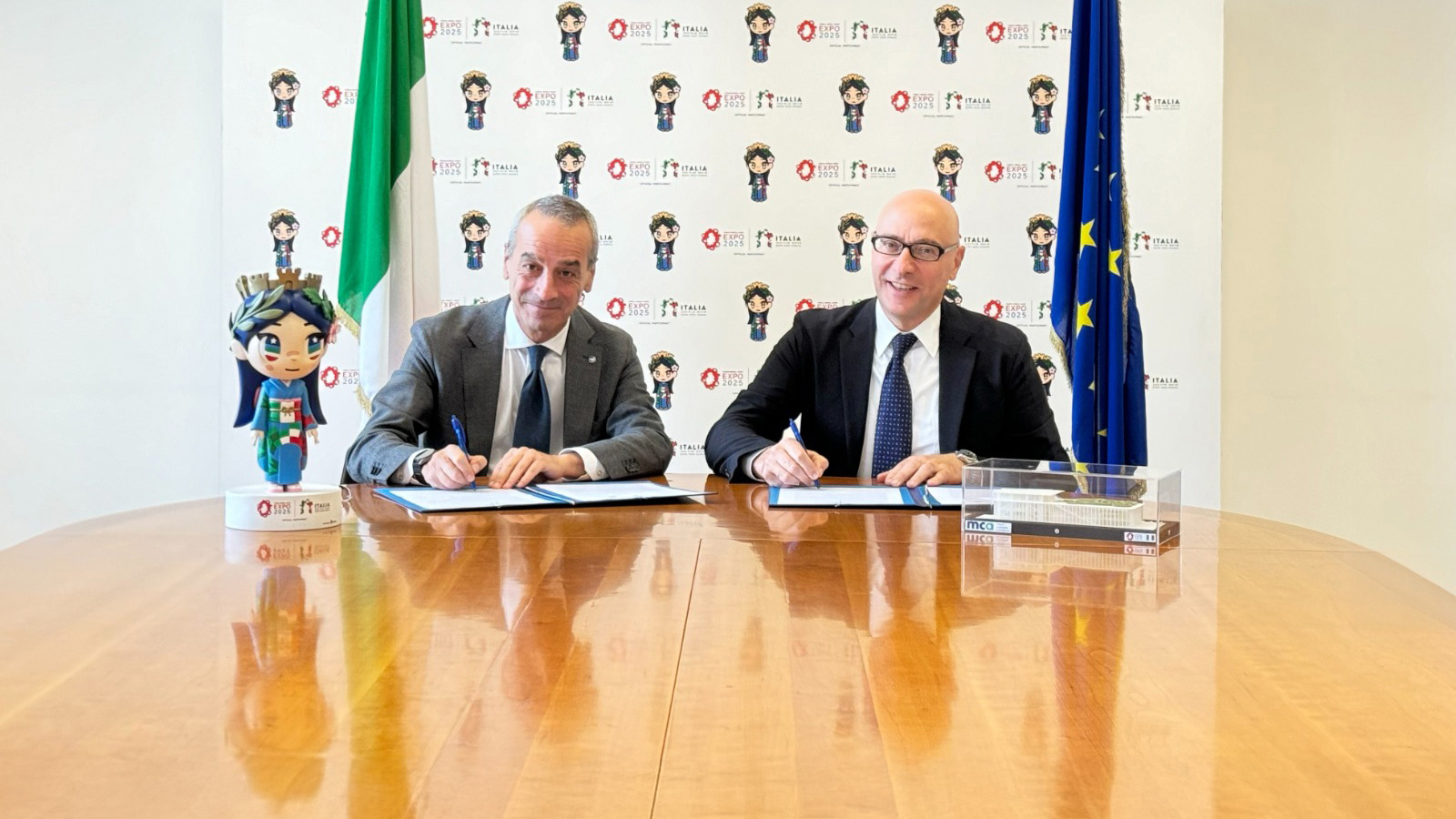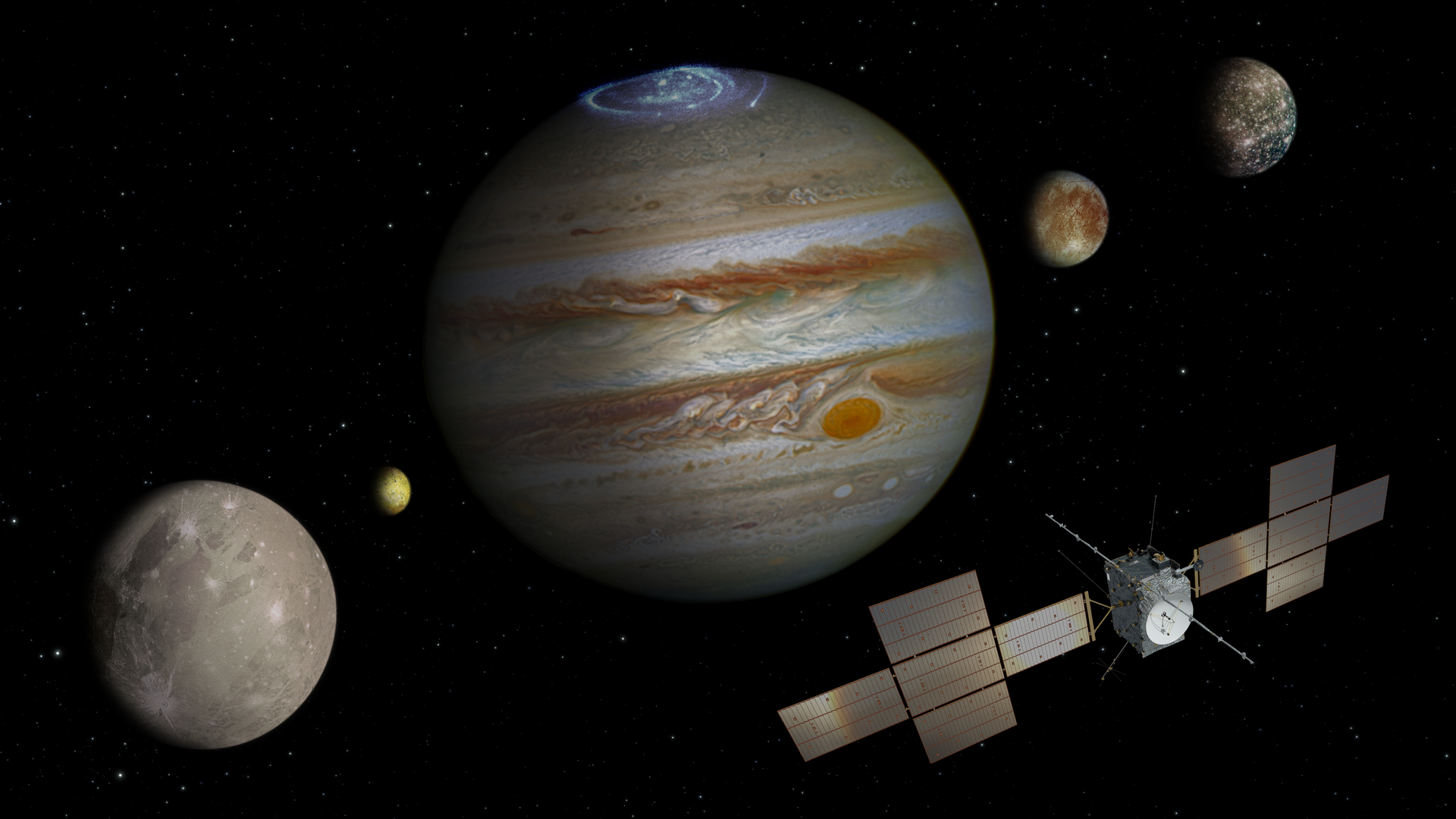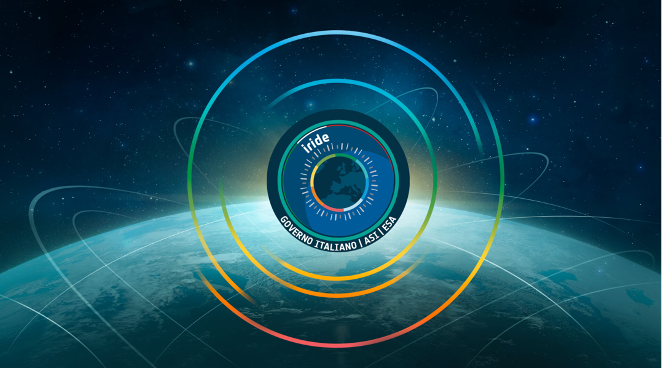Euclid, one of the most precise and stable space telescopes ever built, was launched on 1 July 2023. During its first months in space, teams across Europe turned on, tested, and prepared the mission for routine science observations. However, these ‘routine’ science observations are no piece of cake.
50 000 galaxies in one shot
One of Euclid’s strengths is that it can observe a large area of the sky in one shot. This is crucial for a mission whose primary objective is to map more than one third of the sky in six years.
Euclid will follow a so-called ‘step-and-stare’ observation mode. This means that the telescope will stare at one area of the sky for about 70 minutes, producing images and spectra, and it then takes four minutes to move to the next area of the sky. During its entire mission, Euclid will perform more than 40 000 of these ‘pointings’.
“Thanks to its wide-eyed look at the cosmos, and its long exposure time and sensitivity, the number of galaxies that Euclid can see in one pointing is huge,” explains Roberto Scaramella, Euclid survey scientist at the National Institute for Astrophysics (INAF) in Italy, and lead of the consortium survey group since the beginning of the mission.
Roberto had to make sure that the survey was designed in such a way that it meets the science goals. A main goal for Euclid is to measure in more detail than ever before the shapes of billions of galaxies over billions of years of cosmic history, to provide a 3D view of the dark matter distribution in our Universe.
“To study the individual distortions of galaxies by dark matter, we need to observe at least 1.5 billion galaxies. Euclid will observe the shapes of around 50 000 galaxies with the needed accuracy in one shot, and will spot many more faint ones,” adds Roberto.
However, soon after turning Euclid’s instruments on for the first time, the team realised that the entire survey needed to be re-designed.
A change in attitude
The problem was that a tiny amount of unwanted sunlight was reaching Euclid's visible instrument (VIS) at specific angles, even with the spacecraft’s sunshield (its back) turned towards the Sun.
“The original plan was for Euclid to keep its sunshield facing the Sun. But soon after launch, disturbing light from the Sun was detected in the test images,” explains Ismael Tereno of the University of Lisbon, Portugal, and lead of the Euclid survey operations support team, operated with the support of the Portuguese Space Agency.
“After intense troubleshooting, science, engineering, and industrial teams found that for this light to disappear, Euclid needed to observe with a different orientation (attitude) with respect to the Sun. This meant that the original survey design would no longer work. We had to quickly come up with a new strategy, implement it, and test it,” adds João Dinis, also from the University of Lisbon, Portugal who together with Ismael was responsible for the survey (re-)design.
To minimise the effect of ‘stray’ sunlight, the teams found out that Euclid needs to observe with a more restricted rotation angle, such that the sunshield is not directly facing the Sun, with a small but impactful tilt in one direction. With this new restricted attitude, parts of the sky could not be reached from any point in Euclid’s orbit around L2. “It proved very difficult to find a good survey solution, and we had to go back to the drawing board,” recalls Ismael.
A giant puzzle
It was the start of a very intense phase for João, Ismael and the survey operations and science teams. “João quickly had the insight of what needed to be changed, and then worked around the clock to propose a workable re-design,” says Ismael.
Designing the Euclid survey was a giant puzzle. Aside from the scientific goals and the angle that Euclid needed to observe from, there are many other factors that needed to be considered.
The largest fraction of the mission's observations will be devoted to a ‘wide’ survey, covering more than one third of the sky. The wide survey is complemented by a deep survey, taking about 10% of the total observing time. Aside from that, routine calibration observations also had to be scheduled to fit the puzzle.
Xavier Dupac, ESA survey scientist for the Science Operation Centre at ESAC in Spain, made sure that the survey designed by João, Ismael and the team could be executed. “For example, we need to take into account the time it takes for the spacecraft to rotate from one observing position to the next. These times need to be included in the survey design in addition to the actual observing time,” explains Xavier.
In the end, the teams came up with a workable solution that meant more overlaps between adjacent observations had to be made. Euclid’s survey is now slightly less efficient, but all necessary areas of the sky can be reached and the overall loss in survey area is kept to a minimum.
“The teams worked very hard to redesign the survey in a short amount of time, this is a major achievement," says Valeria Pettorino, Euclid project scientist for ESA. “And this is not the end of the story. As the mission advances and the scientific results start to arrive, the teams will continue to optimise the survey, and be ready to adapt it if needed.”
Looking ahead at Euclid’s first survey year
Today, Euclid officially started its survey. The telescope is currently scheduled to observe a patch of 130 square degrees – more than 500 times the area of the full Moon – over the course of the next 14 days. This patch is in the direction of the constellations of Caelum and Pictor in the Southern Hemisphere.
In the coming year, Euclid will cover around 15% of its survey. This first year of cosmology data will be released to the community in summer 2026. A smaller data release of deep field observations is foreseen for spring 2025.
About Euclid
Euclid is a European mission, built and operated by ESA, with contributions from NASA. The Euclid Consortium – consisting of more than 2000 scientists from 300 institutes in 13 European countries, the US, Canada and Japan – was responsible for providing the scientific instruments and will provide the scientific data analysis. ESA selected Thales Alenia Space as prime contractor for the construction of the satellite and its service module, with Airbus Defence and Space chosen to develop the payload module, including the telescope. NASA provided the detectors of the Near-Infrared Spectrometer and Photometer, NISP. Euclid is a medium-class mission in ESA’s Cosmic Vision programme.
Images
Title: Euclid’s wide and deep surveys
File name: Euclid_scisurvey_14feb.png
Caption: This graphic shows the location of the fields on the sky that will be covered by Euclid's wide (blue) and deep (yellow) surveys. The sky is shown in the Galactic coordinate system, with the bright horizontal band corresponding to the plane of our Milky Way galaxy, where most of its stars reside.
Euclid is an ESA mission that will image billions of galaxies across the Universe to investigate dark matter and dark energy mapping the past ten billion years of our cosmic history. The largest fraction of the mission's observations will be devoted to a wide survey, covering more than one third of the sky.
The portions of the sky that will be covered by the wide survey are outlined by in blue in this image. Other regions are avoided because they are dominated by Milky Way stars and interstellar matter, or by diffuse dust in the Solar System – the so-called zodiacal light. The wide survey is complemented by a deep survey, taking about 10% of the total observing time and repeatedly observing just three patches of the sky called the Euclid Deep Fields, highlighted in yellow in this image.
The Euclid Deep Field North – highlighted in yellow, towards the top left in this view – has an area of 20 square degrees and is located very close to the Northern Ecliptic Pole, in the constellation Draco, the dragon. The proximity to the ecliptic pole ensures maximum coverage throughout the year; the exact position was chosen to obtain maximum overlap with one of the deep fields surveyed by NASA's infrared workhorse, the Spitzer Space Telescope.
The Euclid Deep Field Fornax – highlighted in yellow, in the lower right of the image – spans 10 square degrees and is located in the southern constellation Fornax, the furnace. It encompasses the much smaller Chandra Deep Field South, a 0.11 square degree region of the sky that has been extensively surveyed in the past couple of decades with NASA's Chandra and ESA's XMM-Newton X-ray observatories, as well as the NASA/ESA Hubble Space Telescope and major ground-based telescopes.
The third and largest of the fields is the Euclid Deep Field South – highlighted in yellow, between the Large Magellanic Cloud and the Euclid Deep Field Fornax. It covers 20 square degrees in the southern constellation of Horologium, the pendulum clock. This field has not been covered to date by any deep sky survey and so has a huge potential for new, exciting discoveries. It has been planned to be observed from the ground by the Vera C. Rubin Observatory.
Credit: ESA/Euclid/Euclid Consortium/NASA/Planck Collaboration/A. Mellinger – Acknowledgment: Jean-Charles Cuillandre, João Dinis and Euclid Consortium Survey Group, CC BY-SA 3.0 IGO
Title: Euclid begins its dark Universe survey
File name: Euclid_survey_2024.jpg
Caption:
Euclid will scan across the night sky, combining separate measurements to form the largest cosmological survey ever conducted in the visible and near-infrared. This animation shows the areas it will cover. The different shades of grey/blue depict the area of the sky covered during Euclid’s six-year survey.
Euclid will scan over one third of the sky, focusing on the extragalactic sources. This is the largest area it can cover while avoiding the overpowering brightness of the Milky Way galaxy (horizontal bright line), its largest satellite galaxy (bright spot bottom right) and the dust and sources in the plane of our own Solar System (diagonal bright line).
Credit: ESA/Euclid/Euclid Consortium. Acknowledgement: Work performed by ATG under contract for ESA., CC BY-SA 3.0 IGO

